.avif)
.avif)
Customers buy from your store once but rarely come back? You are not alone. According to reports, nearly 60% of customers who don’t interact with a brand in the first three months end up never coming back.
For WooCommerce store owners, this is where loyalty programs make a measurable difference. They give shoppers a reason to return, reward them for their engagement, and turn one‑time buyers into long‑term customers.
The platform’s flexibility makes it easy to integrate these programs using plugins specifically designed to fit your business model. By selecting the best customer loyalty platform for WordPress, you can create a program that not only encourages repeat purchases but also builds lasting customer relationships.
In this blog, we will break down how to create a loyalty program that works, from choosing the right approach to setting it up effectively.
Why Implement a WooCommerce Loyalty Program?
Acquiring new customers is costly, and without a plan to keep them engaged, many won’t return. A well‑designed WooCommerce rewards program gives shoppers a reason to come back by offering points, discounts, or exclusive perks. This steady engagement reduces churn and turns one‑time buyers into repeat customers who feel valued.
The financial impact goes beyond retention. Customers in loyalty programs often spend more per visit and contribute to a higher lifetime value, making them an asset for long‑term growth. In a crowded eCommerce space, offering a rewards program also helps your store stand out. By showing customers that their loyalty is rewarded, you create a competitive advantage and strengthen their connection to your brand.
Read: Loyalty Pricing: How to Apply and Understand Its Importance

Types of Loyalty Programs for WooCommerce
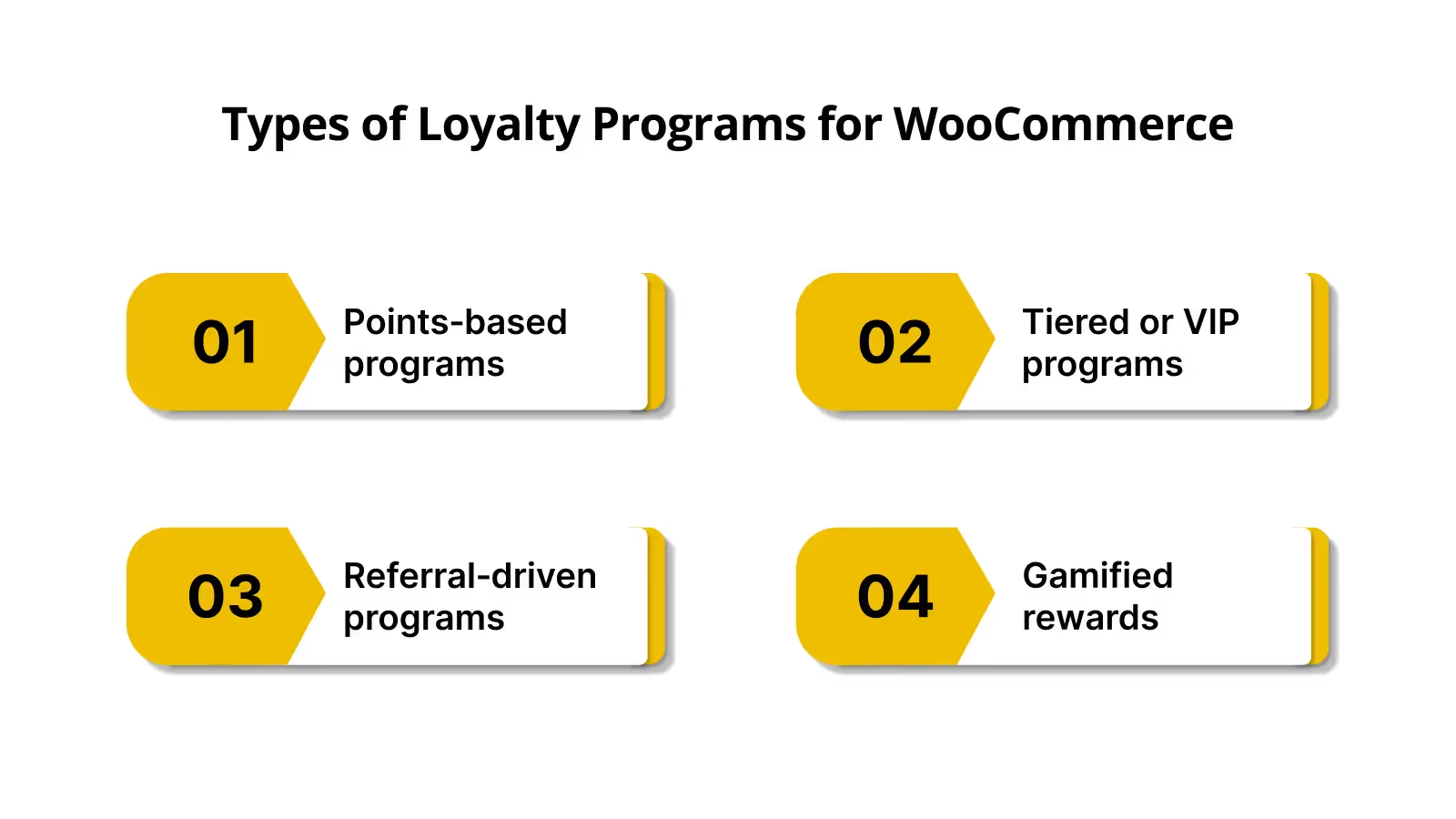
Not all loyalty programs work the same way, and the right approach depends on your customers and business goals. WooCommerce gives you the flexibility to choose from different types of programs that reward customers in ways that resonate with them.
Whether you want to encourage repeat purchases, recognize your most loyal buyers, grow through referrals, or make the experience more interactive, there is a loyalty model that fits your store. Here are the types of loyalty programs you can explore to find the best fit for your WooCommerce store:
1. Points‑based programs
Many WooCommerce stores struggle with one‑time buyers who disappear after their first purchase. A points‑based program addresses this by giving customers a reason to keep coming back. It works by awarding points for meaningful actions such as making a purchase, creating an account, writing product reviews, or sharing products on social media.
A simple approach many store owners use is assigning one point for every dollar spent, which customers can exchange for discounts, store credit, or even free products. This system is easy to communicate, which increases participation. For businesses with repeat‑purchase products like skincare, coffee, or pet supplies, a points program can drive consistent engagement and encourage customers to choose you over competitors.
2. Tiered or VIP programs
As your customer base grows, you may notice that some shoppers spend significantly more than others. A tiered program helps you recognize and reward these high‑value customers. It creates exclusive levels, such as Silver, Gold, or Platinum, where each level unlocks new benefits like higher discounts, free shipping, or early access to sales.
This approach motivates shoppers to increase their spending to reach the next level and enjoy better rewards. It also builds a sense of belonging among your most engaged buyers, turning them into long‑term advocates for your brand. Tiered programs work especially well for stores selling higher‑value products, such as electronics, fashion, or specialty items.
3. Referral‑driven programs
Bringing in new customers often requires expensive ads, but your existing customers can become your best marketers. Referral programs reward shoppers for inviting friends and family to your store. In WooCommerce, you can set up those plugins that offer points, discounts, or store credit for every successful referral. Many businesses also give new customers a welcome bonus, which makes joining more attractive.
This type of program creates a win‑win: your customers feel appreciated for spreading the word, and you gain new shoppers without the high costs of traditional advertising. Referral programs are especially effective for brands with strong communities or products people love to share, such as fitness gear, subscription boxes, or hobby‑related items.
4. Gamified rewards
Traditional loyalty programs can sometimes feel routine. Gamification adds excitement by turning rewards into an interactive experience. Features like spin‑the‑wheel bonuses, purchase challenges, or achievement badges make earning points more engaging for customers.
This approach keeps customers curious and motivated to participate, especially when paired with limited‑time challenges or surprise rewards. Gamified programs work well for stores with younger audiences or brands that want to create a fun, community‑driven shopping experience.
Pro Tip
If you are running a smaller store, start with a points‑based program. It is simple to manage and easy for customers to understand. As your business grows, layering on tiers, referrals, and gamification gives you more ways to keep customers engaged and spending.
The right loyalty program can do more than just increase repeat purchases. It can strengthen your connection with customers and set your store apart from competitors. Tools like Nector offer an integrated approach by combining points, referrals, and reviews in one platform, helping you manage loyalty efforts more efficiently while creating a smoother experience for your customers.
Read: Successful Loyalty Program Examples and Benefits for 2025
Choosing the Best Customer Loyalty Platform for WordPress
Trying to run a loyalty program manually in WooCommerce means juggling spreadsheets, duplicate tools, and endless configuration issues. You need a platform that automates rewards, tracks customer behavior, and lets you scale as your store grows. Here’s what to look for and which plugins deliver.
Key Features to Look for in a Loyalty Platform
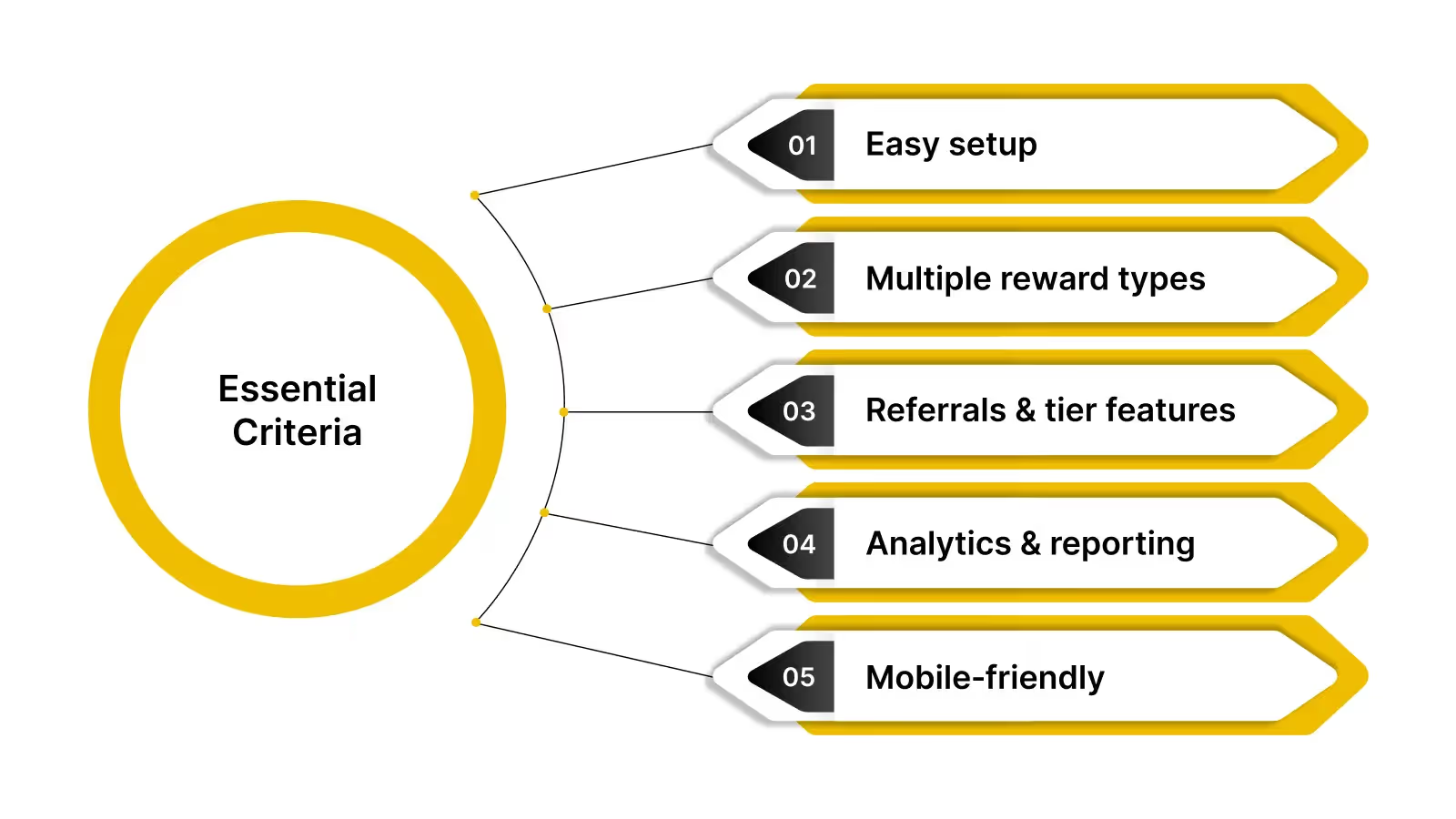
- Easy setup: Ideal if your team isn’t technical, set it up in minutes, and manage from within WooCommerce.
- Multiple reward types: Support discounts, store credits, free products, referral bonuses, and more.
- Referrals & tier features: Ability to automate referral incentives and progressive VIP levels.
- Analytics & reporting: Clear dashboards to monitor points earned, redeemed, and their impact on repeat sales.
- Mobile‑friendly: Badges, widgets, or dashboards should work smoothly on smartphone checkout and account pages.
Top WooCommerce Loyalty Plugins
Here’s a quick look at some of the top WooCommerce loyalty plugins to help you compare features, pricing, and suitability for your store’s goals. Each option offers unique strengths depending on your business size and customer strategy.
Pro Tip: Before you commit to a plugin, build a simple comparison table based on your store’s size and growth goals. Include:
- Pricing and license terms so you know exactly what you’re paying for.
- Reward types supported, like points, store credits, free products, referrals, or VIP tiers, to see if it matches your customer strategy.
- Ease of setup and design flexibility for a smooth experienc,e even if your team isn’t technical.
- Analytics and reporting features to monitor points earned, rewards redeemed, and the impact on repeat sales.
- Multi-currency and mobile compatibility to ensure a seamless experience for all customers.
This makes it easy to pick a platform that meets your needs, whether you’re after the best customer loyalty platform for WordPress or something simple to get started. If you want an all‑in‑one solution, platforms like Nector combine loyalty programs, referrals, and customer reviews in a single system, while offering real‑time analytics and flexible personalization. This helps you manage retention without juggling multiple tools.
Read: Maximizing Growth with CLV: A Strategic Loyalty Approach
How to Set Up a WooCommerce Loyalty Program
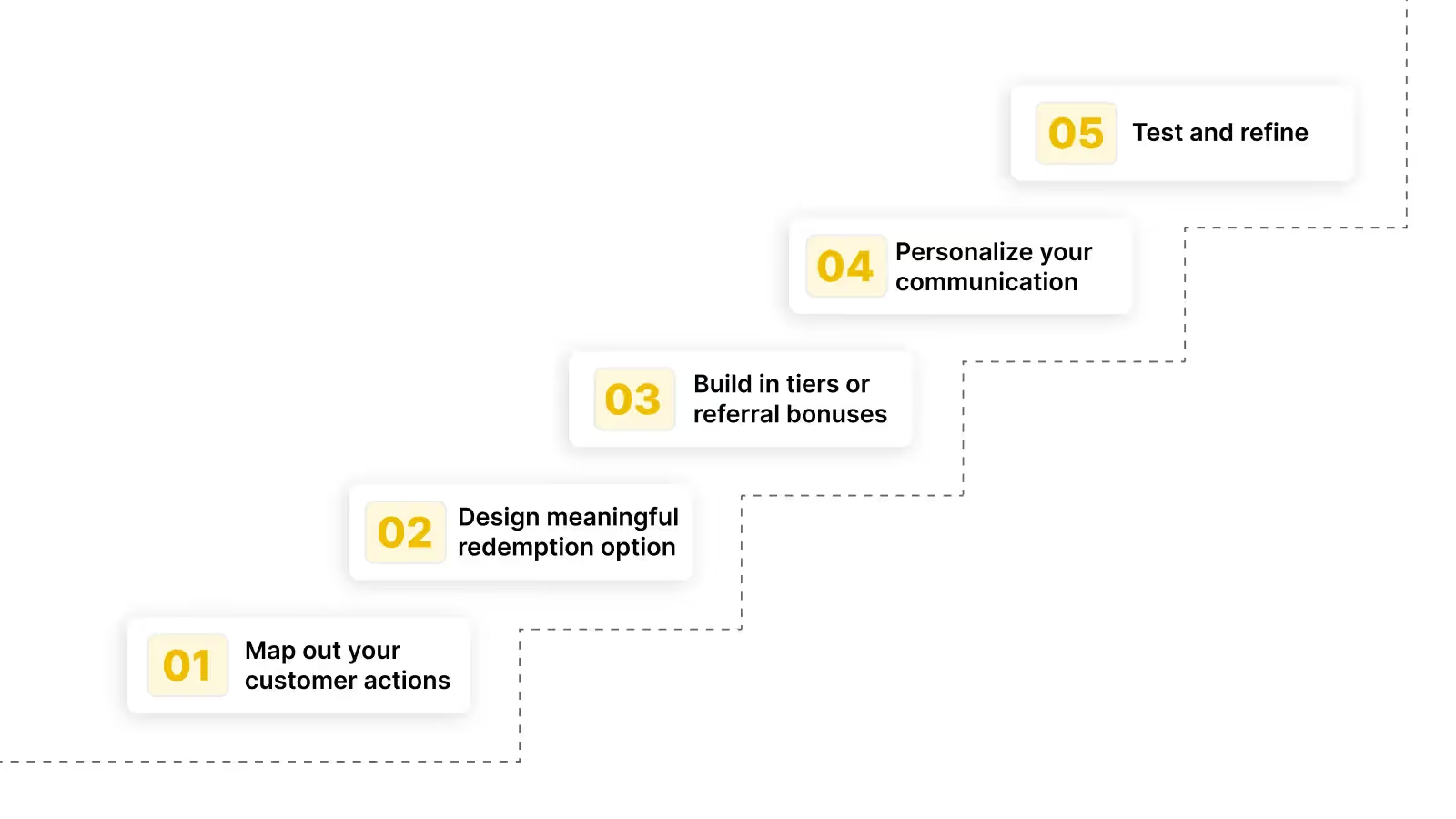
Setting up a loyalty program in WooCommerce doesn’t have to be complicated. With the right plugin, you can automate points, rewards, and referrals without heavy manual work. Here are the key steps to get your program up and running smoothly:
A loyalty program only works when it’s thoughtfully designed around your customers and your store’s goals. It’s not just about adding a points system; it’s about creating an experience that keeps shoppers coming back. Here’s a structured approach to building one:
Step 1: Map out your customer actions
Start by defining which behaviors you want to encourage. For many stores, purchases are the obvious choice, but don’t stop there. Consider rewarding actions that deepen engagement, like signing up for an account, leaving reviews, referring friends, or even interacting with your brand on social media. Assign point values to each action based on its value to your business.
For instance, a purchase might earn more points than a review, while referrals could offer a higher reward because they bring in new customers. This balance ensures that customers feel appreciated for their efforts while you see a real return on these incentives.
Step 2: Design meaningful redemption options
Earning points is only motivating if redemption feels worthwhile. Think carefully about what rewards will resonate with your audience. Common options include percentage‑based discounts, store credits, free shipping, or exclusive products. Avoid overly high redemption thresholds, as that can discourage participation.
A good rule of thumb is to let customers redeem small rewards early, while also offering higher‑value incentives for those who engage more deeply. This creates both quick wins and long‑term goals for your customers, making them more likely to stay active in the program.
Step 3: Build in tiers or referral bonuses
As your program grows, add layers that make it feel more dynamic. Tiered programs, such as Silver, Gold, and Platinum levels, create a sense of progression and exclusivity. They encourage higher spending by offering bigger benefits at each level, like free shipping or early access to sales.
Referrals, on the other hand, turn your existing customers into advocates. By rewarding them for bringing in friends or family, you can reduce your reliance on paid advertising while tapping into word‑of‑mouth growth. Both features add depth to your loyalty program and increase its long‑term impact.
Step 4: Personalize your communication
A loyalty program works best when customers are kept in the loop. Use emails, in‑app notifications, or SMS to let them know when they’ve earned points, when they’re close to a reward, or when points are about to expire.
These reminders create urgency and excitement. Personalizing your communication, like addressing customers by name or highlighting their progress, helps the program feel less transactional and more like a relationship between your brand and its shoppers.
Step 5: Test and refine
Before launching, run multiple test scenarios. Place test orders, attempt redemptions, and review how the program appears in the customer dashboard. Once live, track key metrics such as program enrollment, points redemption rates, and how often customers return.
These insights show whether your program is working and where it needs adjustment. Loyalty programs aren’t static; what works at launch may need fine‑tuning as customer behavior evolves.
By following these steps, you can launch a loyalty program that is simple for customers to use and easy for you to manage. Platforms like Nector make this process smoother by automating point tracking, handling referrals, and offering built‑in analytics so you can see what is working. As your store grows, you can adjust rewards, earning rules, and tiers based on real customer behavior for a program that evolves with your business.

Conclusion
Creating a loyalty program for WooCommerce is more than setting up points and discounts. It’s about designing an experience that makes customers want to return, spend more, and feel genuinely appreciated. Many store owners struggle to do this without adding hours of manual work or piecing together multiple tools that don’t quite work in sync. A good program should feel simple to run and meaningful for your customers. It needs to reward the actions that matter most to your business, provide incentives that customers care about, and evolve as your store grows. It should also make it easy for you to see how these efforts translate into stronger retention and higher lifetime value.
If you’re ready to create a loyalty experience that drives repeat purchases and strengthens customer relationships, Book A Demo with Nector and explore how it can work for your store.
FAQs
1. What makes a loyalty program effective for WooCommerce stores?
An effective WooCommerce loyalty program offers rewards customers actually value, like points, discounts, or store credits, and keeps them coming back. It should be easy to join, simple to manage, and drive higher retention and lifetime value.
2. How do I select the best customer loyalty platform for WordPress?
Pick a platform that integrates smoothly with WooCommerce, supports points, referrals, and tiered rewards, and provides clear analytics. Compare pricing, scalability, and ease of setup to find the best fit for your store.
3. Can small WooCommerce stores benefit from loyalty programs?
Absolutely. Even a basic points-based system can boost repeat sales. Start simple, then add VIP tiers or referral features as your store grows to build customer loyalty gradually.
4. How do referral programs work in WooCommerce loyalty systems?
Referral programs reward customers for bringing in new buyers. When a referred shopper makes a purchase, both the referrer and the new customer earn rewards, helping you grow through word-of-mouth instead of ads.
5. How do I know if my loyalty program is working?
Track metrics like repeat purchase rate, points redemption, and customer lifetime value. If engagement and repeat sales rise, your WooCommerce loyalty program is performing well. Adjust rewards and tiers based on data for better results.
FAQs
Start Building Customer Retention That Lasts



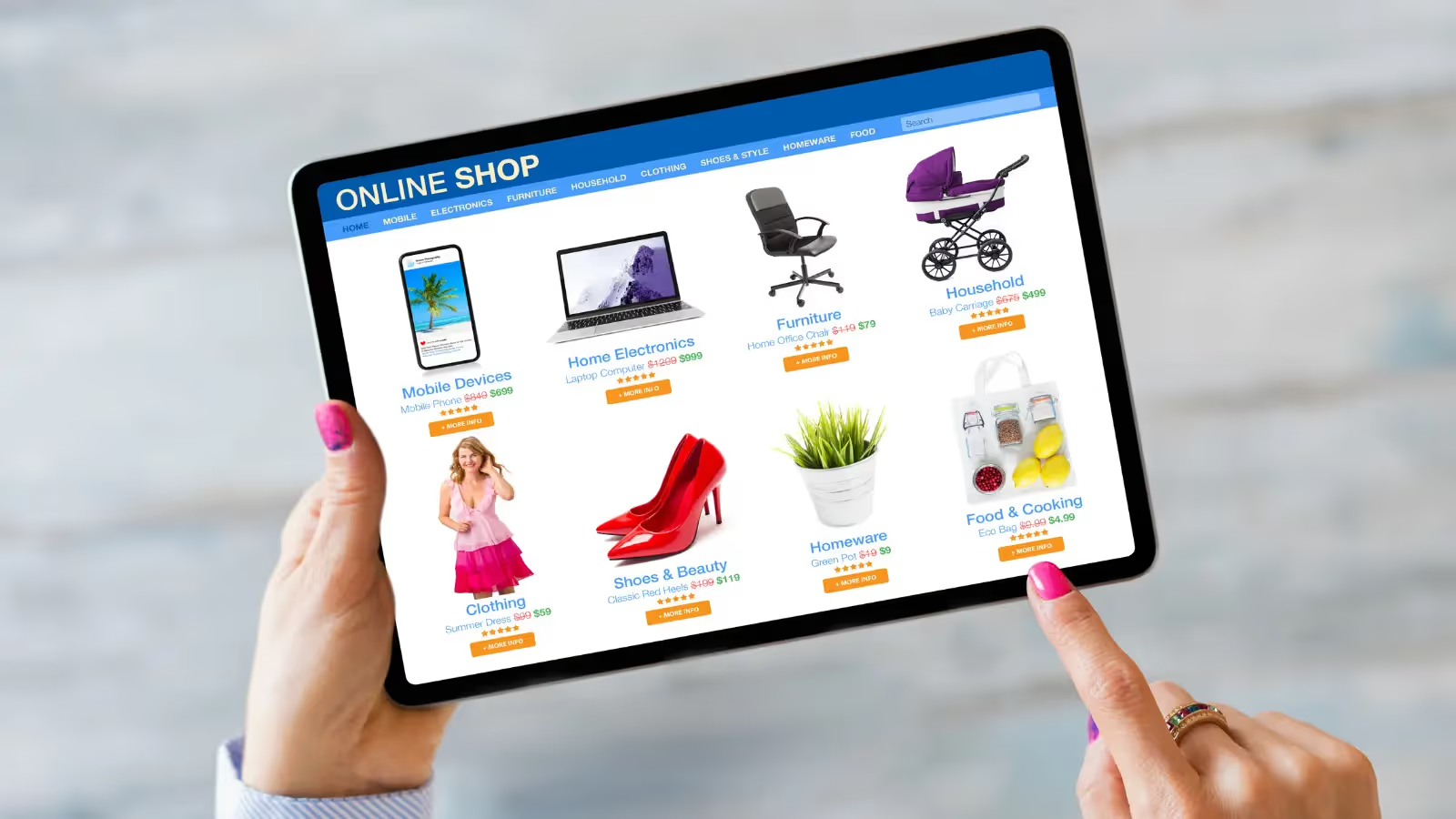

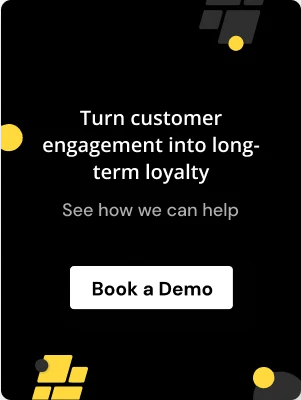
.webp)



